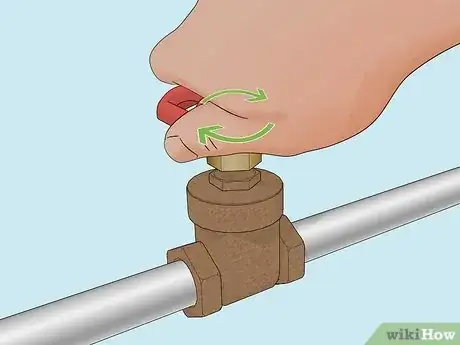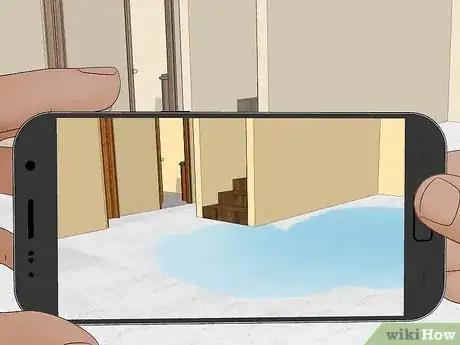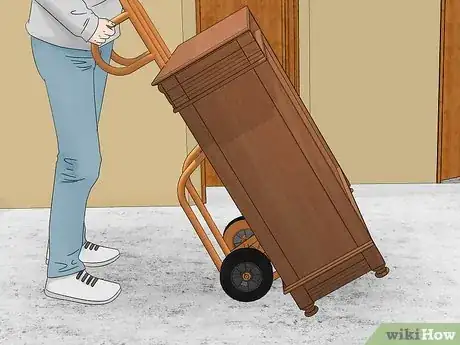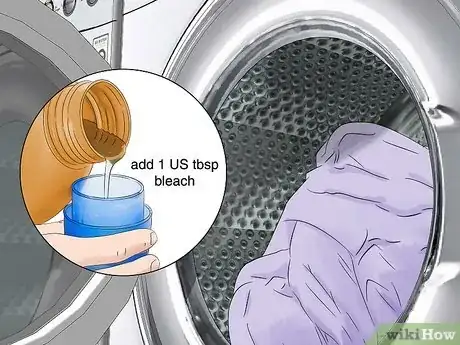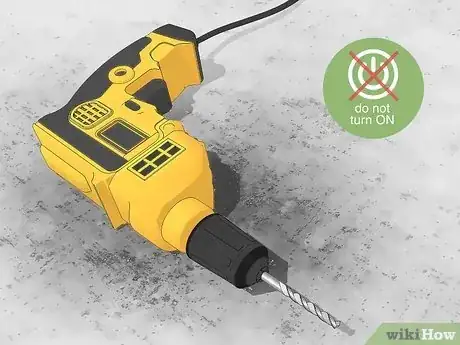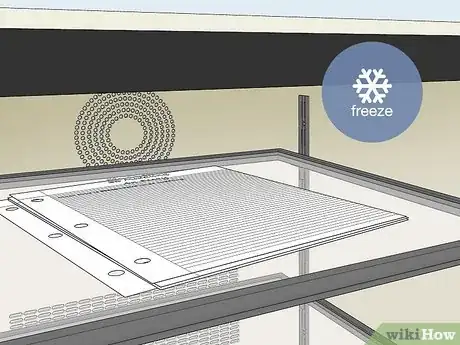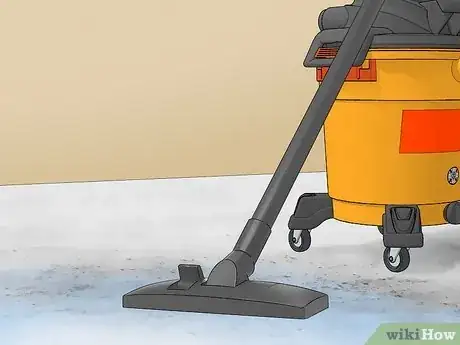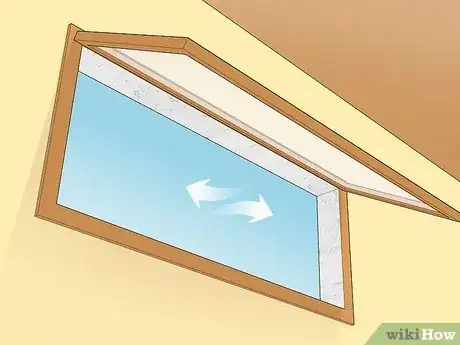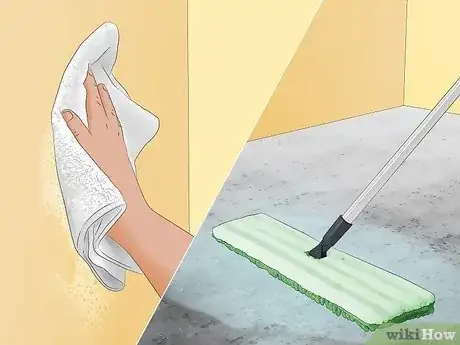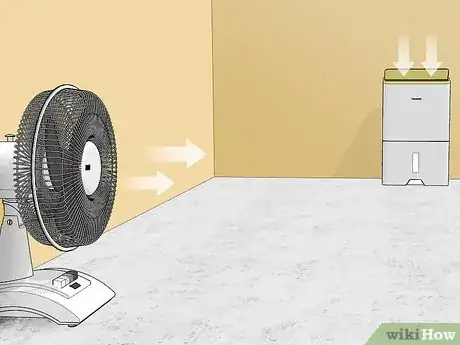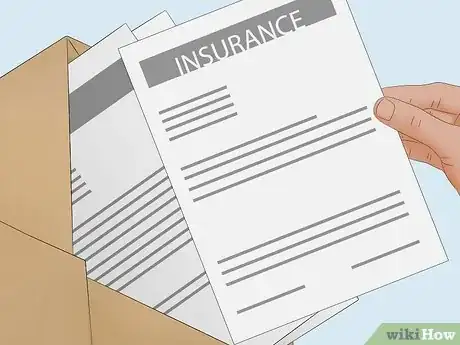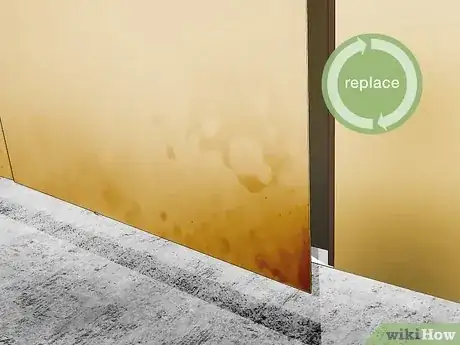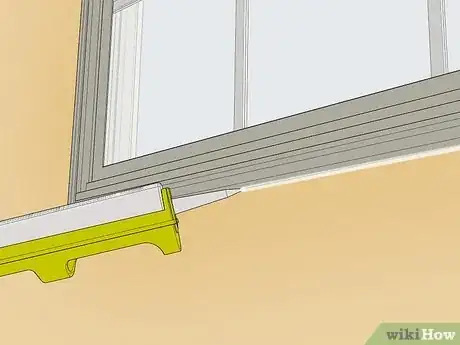This article was co-authored by Ryan Owsiany and by wikiHow staff writer, Hannah Madden. Ryan Owsiany is a Drywall and Painting Specialist and the Owner of Patch and Paint Pros in Conshohocken, Pennsylvania. With over two decades of experience, Ryan specializes in interior and exterior house painting as well as drywall, plaster, and water damage repair. Ryan holds a BS in Industrial Engineering from Penn State University. Patch and Paint Pros only employ experienced, friendly painters that understand proper preparation is required to ensure client satisfaction on every painting project.
Whether it’s because of the rainy season, a burst pipe, or an overflowing toilet, discovering that your basement has flooded is no one’s idea of a good time. But while it may seem overwhelming at first, by acting fast and taking the right steps, you can mitigate the damage and get your basement cleaned up in no time. With our helpful article, you’ll learn what to do first, how to clean up safely, and most importantly, how to stay calm and keep a level head while doing it. To begin the cleanup process and get your basement back to normal, keep reading.
Things You Should Know
- Turn off the electricity before stepping foot in the basement to avoid getting electrocuted.
- Stop the leak at the source if possible, then take photos of the basement for insurance purposes.
- Pump the majority of the water out with a gas-powered pump or a wet-dry vac.
- Use fans and dehumidifiers to dry out the basement and avoid mold or mildew.
Steps
Turn off the electricity.
-
Shut off the breakers for safety before doing anything else. When you notice that your basement is flooded, it’s tempting to run into the water and start salvaging your stuff. However, electronics and wall plugs can shock you if you step foot in a flooded basement. Be sure to flip the breakers to the basement and shut off any electricity before moving on.[1] X Research source
- If you can’t access the electrical box because of the flooding, contact an electrician. They’ll help you assess whether or not it’s safe to enter the basement with the electricity still on.
Stop the leak at the source if possible.
-
Slow the flood water down to make cleanup easier. If your flood is caused by a burst pipe, shut off your home’s water supply. If the flood is caused by an overflowing toilet, turn off the water at the base of the toilet. If the flood is caused by rainwater from a storm, wait until the storm passes before you work on removing any water.[2] X Research source
- Your flood might also be caused by an overflowing bathtub or sink. If that’s the case, be sure the water is turned off and let the water drain down the sink or bathtub.
- Basements typically leak from the walls and windows. If walls and windows aren’t sealed properly, enough rainwater can cause a flood.
Take photos of the damage.
-
Photos will help you submit an insurance claim later on. Dealing with a flooded basement is super stressful, and you’re probably ready to get started on cleanup right away. Before you do, grab your phone and snap a few pictures of the damage, just in case you’d like to submit an insurance claim.[3] X Research source
- Take photos of anything that is noticeably damaged, like furniture or important documents. Snap some photos of the leak itself and where it came from, especially if it’s because of a faulty foundation or unsealed windows.
- Most homeowner and renter’s insurance will cover flood damage, although some do not. Speak with your insurance agent if you’re unsure.
Move wet items and furniture.
-
Transport soaked items to a new spot to start drying. Grab any furniture, boxes, or other items in your basement that are wet, and bring them to a dry area. Spread everything out on towels and point fans at the items to start drying them out and preventing mold.[4] X Research source Depending on where the water came from, you may want to wear waders or rain boots while you step into the flood water.
- If any of your items can be washed in the washer, start there before drying them out. If they are bleach-safe, add 1 US tbsp (15 mL) of bleach to the load to kill mold and mildew.
- You can transport electrical items (like power tools) out of the basement, but don’t turn them on until a professional has inspected them and deemed them safe for use.
- Did your important documents get wet? Throw them in the freezer until later. The cold of the freezer will halt mold and mildew until you can get them dry again.
Pump out the excess water.
-
Use a wet-dry vac or a water pump to get rid of a lot of water. When your basement still has standing water in it, it’s important to get it out as fast as possible. Either rent a gas-powered water pump or use a wet-dry vac to suck up the water and pump it outside.[5] X Research source
- If you have a pool-pump handy, that works too.
- Be sure to pump the water well away from the foundation of your home. Make sure the water won’t run directly back into your basement, which could cause even more damage.
Open all doors and windows.
-
Get an airflow going to evaporate some of the water. If it’s not currently raining outside, open up as many doors and windows as you can to the basement. The airflow will help dissipate some of the water, and will also help prevent mold and mildew from settling in.[6] X Research source
- Your basement might smell a little dank and damp after a flood. Getting good airflow will help get rid of that, too.
Wash walls and floors with soapy water.
-
Flood water can be gross, so give your basement a deep clean. Once you’ve gotten the majority of the water out, use warm water and dish soap to wipe down the walls. Mop all of the floors before letting the basement air dry.[7] X Research source
- If your basement has carpet, pull the carpet up and point a fan underneath it. When it’s mostly dry, you can pull out the carpet padding and clean the cement floor underneath. If your carpet develops mold or mildew, it may need to be replaced.
- If your basement has a wood floor, be sure to use wood floor cleaner while mopping.
Use fans and a dehumidifier to dry the basement.
-
Focus on drying out the basement as fast as possible. After a basement has been flooded, it’s much more prone to mold and mildew. Point fans at your basement walls and floors, and set up dehumidifiers to pull moisture out of the air.[8] X Research source
- Depending on how much your basement flooded, you may need to leave the fans and dehumidifiers going for multiple days.
- Worried about mold and mildew still? Use an anti-mildew spray on the walls and the floor.
Submit a claim with your insurance company.
-
Speak to your insurance agent about covering flood damage. When a basement floods, important things of value might get damaged. If you have insurance, reach out quickly so you can talk about covering the cost of replacing lost items or dealing with water damage.[9] X Research source
- If you’re renting the home, talk to the homeowner or landlord as well. They may want to submit a claim with their own insurance for any damage to the home.
Replace water-damaged drywall.
-
Unfortunately, drywall does not dry out well after getting wet. If your basement walls are finished with drywall, it’s best to pull it out and replace it. It may seem like a pain, but it will be worth it to avoid mold and mildew in the future.[10] X Research source
Prevent future floods by repairing the walls or foundation.
-
Keep water out by making seals airtight. Most of the time, basements flood when there is a crack in the foundation or there’s an unsealed window. Either patch these yourself with caulk, or hire a professional to come and make sure your basement won’t flood again.[11] X Research source
- There are other things you can do to prevent your basement from flooding, like regrading the yard around your foundation, replacing damaged flooring or walls, and replacing damaged pipes.[12] X Trustworthy Source Federal Emergency Management Agency Federal agency responsible for coordinating responses to disasters and states of emergency Go to source A professional contractor will be able to tell you what needs to happen in your basement.
References
- ↑ https://rosenet.org/1393/What-to-do-for-basement-flooding
- ↑ https://www.columbus.gov/utilities/customers/What-to-Do-if-Your-Basement-Floods/
- ↑ https://rosenet.org/1393/What-to-do-for-basement-flooding
- ↑ https://www.columbus.gov/utilities/customers/What-to-Do-if-Your-Basement-Floods/
- ↑ https://www.columbus.gov/utilities/customers/What-to-Do-if-Your-Basement-Floods/
- ↑ https://www.columbus.gov/utilities/customers/What-to-Do-if-Your-Basement-Floods/
- ↑ https://www.columbus.gov/utilities/customers/What-to-Do-if-Your-Basement-Floods/
- ↑ https://rosenet.org/1393/What-to-do-for-basement-flooding
- ↑ https://rosenet.org/1393/What-to-do-for-basement-flooding
About This Article


